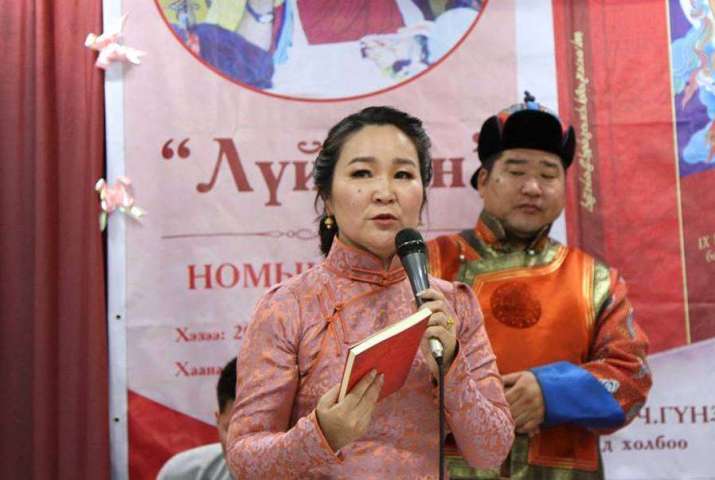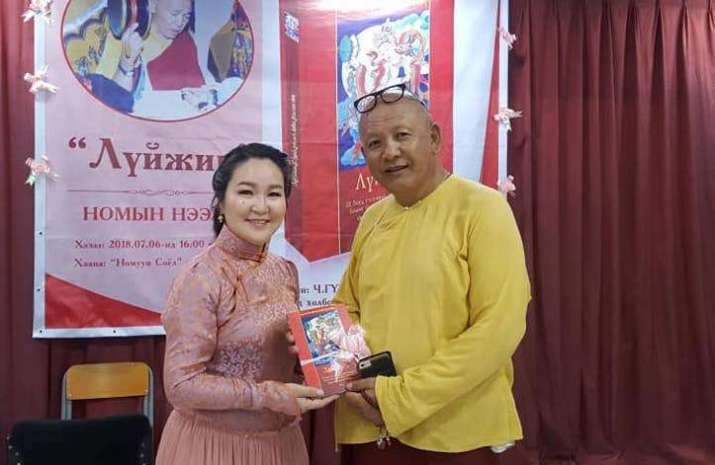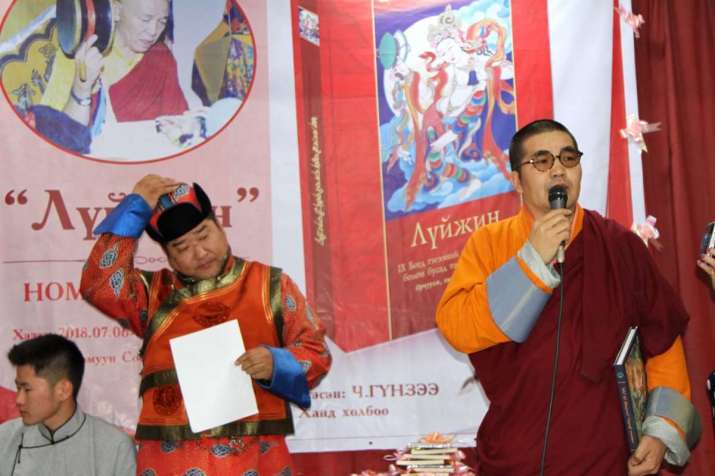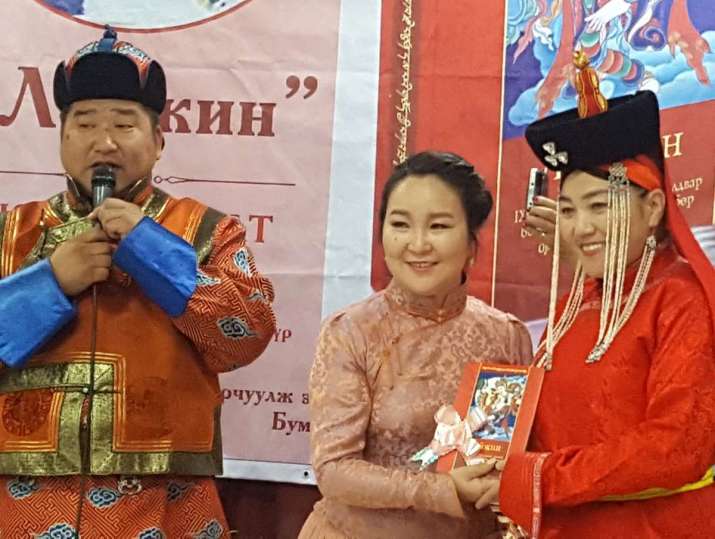
Mongolian yogini Kunze Chimed dedicates her Dharma work to preserving the ancient traditions of Buddhist women in Mongolia. She is the director of an association of Buddhist women called Buman Khand (Million Dakinis), a brilliant performer of Tibetan mantras, and the translator of several books. Her new book, Lujin, which means Giving the Body in Tibetan, is a translation of instructions from her main teacher, His Holiness Khalka Jetsun Dampa Rinpoche (1933–2012), who was recognized as the ninth incarnation of Jetsun Dampa Khutuktu (1635–1723), the third-highest lama in the hierarchy of Tibetan Buddhism, and who served as the head of Mongolian Buddhist sangha.
Lujin is the Tibetan name of a Buddhist tantra that Mongolians traditionally chant as a rite of good fortune. The term can be used interchangeably with chöd (the Tibetan practice also known as Cutting through the Ego), or they can be used together. The tradition of Chöd Lujin has its roots in Tibet, where it was founded in the 11th century by a reincarnation of the wisdom dakini Machig Labdron (1055–1149).
The Ninth Jetsun Dampa Rinpoche taught his numerous disciples the practice of Chöd Lujinas one of his main transmissions.His students recorded the instructions of the eminent teacher and Kunze Chimed has compiled those recordings in book form. I had the privilege of interviewing Kunze Chimed about the publication of her new book.

Buddhistdoor Global: Kunze Chimed, can you give us a little background about your new book?
Kunze Chimed: The book is a translation from Tibetan into Mongolian of the manual and the commentary of the practice Chöd Lujin according to Gelugpa school of Tibetan Buddhism. Traditionally, Chöd Lujinis performed with instruments like the damaru (hand drum), bell, and trumpet, and the text is chanted with specific melodies. The book also provides descriptions of the different melodies and extensive symbolism of the practice.
The tradition of Chöd Lujin was established by Machig Labdronas a method for attaining Buddhahood in one lifetime. The practice combines the paths of Sutrayana and Tantrayana, and its main meditation includes visualizing the transformation of one’s own body into “food” in order to accomplish the practice of generosity (Skt: dana, Tib: jinpa). Through offering the body as food, one dispels the attachments and illusions, represented by the demon Mara, that create obstacles on the path to enlightenment.
Machig Labdron passed the tradition down to her son Gyalpo Dondrub and her closest disciples. Since then, the practice has been adapted, with a diversity of methods and approaches of the major and minor traditions of Tibetan Buddhism emerging with unique styles, while retaining its main philosophy until it was adopted in Mongolia.

BDG: Why did you decide to translate the practice manual and commentary of Lujin?
KC: As a Chödpractitioner, I have long desired to write down what I’ve learned in my native language. The Ninth Jetsun Dampa Rinpoche, my guru, was for me a treasured gem bestowing on me his precious teachings. It was my auspicious destiny that I had the privilege of receiving the Chöd initiation and instructions personallyfrom him, and he also taught me the melodies and rites of the practice. Bogd* Jetsun Dampa Rinpoche spent his life supporting the development of the knowledge and skills of his disciples. Although I am not in a position to repay what he did for me, I have made it my purpose to translate and publish his teachings. At the same time, I have been giving presentations on Chöd Lujin at international conferences and researching female chödpractitioners (Tib: chödma). All of these materials are also included in the book.
As the Buddhist teachings spread in Mongolia, mainly from Tibet, Buddhist scriptures are mostly studied and chanted in the Tibetan language. There are dozens of works on the theory and practice of Buddhism written by Mongolians, but only a few tantras have been translated into Mongolian. The number of people who are not aware of the meaning of the chödpractice has increased, thus my aim was to comprehensively describe for such people the origin of lujin tantra, its transmissions, meditation sadhana (practice manual), its deities, its melodies, and provide instructions for group retreats.

BDG: Can you tell us about the launch of your book and its reception?
KC: The book launch was held on 6 July, the birthday of His Holiness the Dalai Lama. This day was chosen because His Holiness was the main teacher of Bogd Jetsun Dampa Rinpoche. It was organized in a Buddhist book store named “Nomuun Soel Dharma Culture” and more than 100 people attended, most of whom were my friends who support me, including Dharma friends. Among the distinguished guests was Tuksey Rinpoche, son of the Ninth Jetsun Dampa Rinpoche. Tuksey Rinpoche was delighted with the translation of the teachings of his father. He wrote a foreword for the book and gave a speech during the launch.
Scholars of Mongolian studies, representatives of Gandan Monastery, and a professor from the Mongolian State University also gave speeches during the launch, highlighting its importance.
People have responded very positively to this book. In translating the meaning of the scriptures, I have aimed to make it easily understandable to people from all walks of life. Because the Buddhist teachings are very deep, it is not easy to understand by reading a scripture just once. One needs to be guided by a teacher and attend a number of Dharma sessions to attain a proper understanding of a scripture. This book offers people comprehensive knowledge of all aspects of lujin. After the book was published, I realized how much people had been needing this kind of book, thus I feel blessed that I was able to deliver to the people the knowledge they need.
BDG: What is your next project?
KC: I have several ongoing projects. I manage the activities of Buman Khand, and I plan to do more trainings, teachings, and conferences about Buddhist women.
* Bogd Khan—“Great Emperor,” a title for the highest lama in Mongolia.












